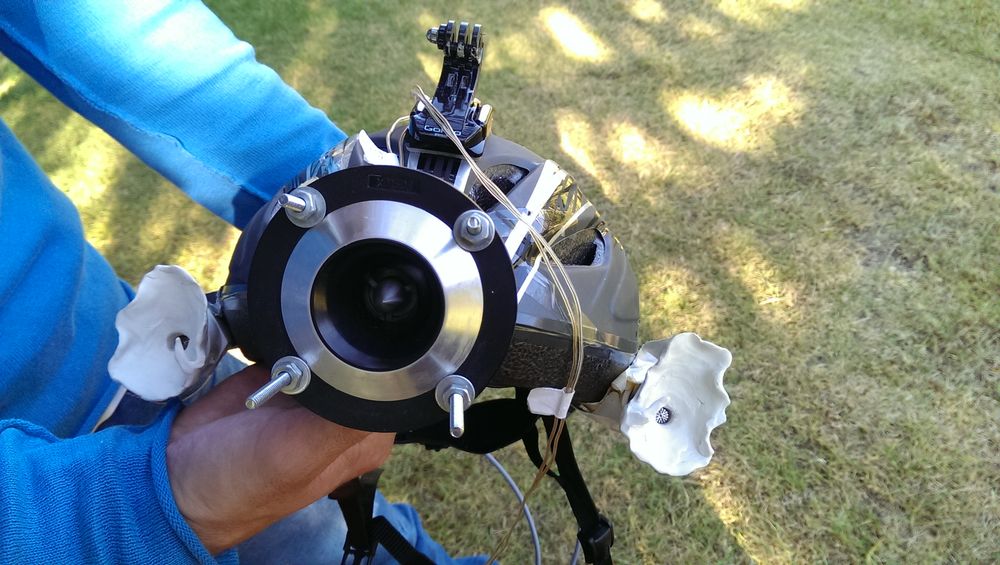
Image courtesy of Benjamin Gaub and Sarah Hillenbrand https://www.popsci.com/ultrasonic-helmet-lets-anyone-see-bat
A close up image of a helmet used to convert sound into visual representations.
Sonar
has proved useful for ocean travel and mapping, but it
can also benefit humans in other areas.
Some of the latest technologies are developing systems for the blind to use Sonar to visualize their surroundings. By sending out clicks and picking up their echos with extremely sensitive microphones, specialized helmets can give blind people sight.
These methods of echolocation require the person to make a click with their tongue, similar to a bat's high frequency chirp. After much practice in analyzing the reflected echos, a person can visualize their surroundings.
As these methods are still in development, it is unclear how these technologies could affect bat species around the world.
Some of the latest technologies are developing systems for the blind to use Sonar to visualize their surroundings. By sending out clicks and picking up their echos with extremely sensitive microphones, specialized helmets can give blind people sight.
These methods of echolocation require the person to make a click with their tongue, similar to a bat's high frequency chirp. After much practice in analyzing the reflected echos, a person can visualize their surroundings.
As these methods are still in development, it is unclear how these technologies could affect bat species around the world.
Contents
Title
Sonar and Frequency
Echolocation
Other Species Using Sonar Techniques
Human Adaptions (Current)
Bibliography
Sonar and Frequency
Echolocation
Other Species Using Sonar Techniques
Human Adaptions (Current)
Bibliography